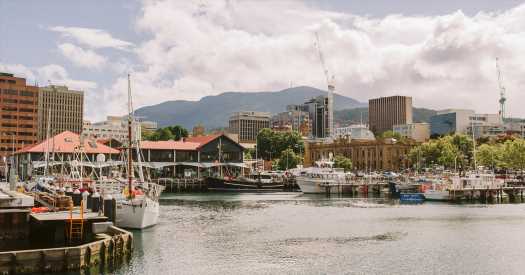Tasmanians have heard all the tired jokes from mainland Australians. The country’s isolated southern island state has been so overlooked in the past, it’s even been left off maps of Australia. In recent years, however, Australians have changed their tune. Tasmania is experiencing a surge of weekenders and property buyers, driven by a newfound interest in its pristine nature, unhurried way of life and an increasingly diverse food and art scene that really started to take off with the arrival, in a Hobart suburb, of the Museum of Old and New Art (MONA) in 2011. The biggest transformation has taken place in the once-sleepy capital of Hobart, which now boasts a plethora of creative new restaurants and an edgy spirit, particularly during the winter Dark Mofo festival. (A highlight: the nude solstice swim in the chilly River Derwent.) Tasmania’s profile is rising overseas, as well. International visitors jumped by 21 percent from mid-2017 to mid-2018 — the biggest rise by far of any Australian state. Tasmanians have always known how good the life is here. The rest of the world is only now starting to find out.
Friday
1) 3:30 p.m. Gallery hopping
While MONA has put Tasmania on the international art map in recent years, Hobart’s gallery scene has actually been showcasing the best of Tasmanian art for decades. Both Despard and Handmark galleries — set in renovated 19th-century Georgian sandstone warehouses on the waterfront — exhibit works by well-known local artists like the landscape painter Geoff Dyer and the animal portraitist Michael McWilliams, as well as dozens of emerging artists. And Bett Gallery, which recently relocated to a 1950s modernist office building with beautifully restored parquet floors and coffered ceiling, has rotating exhibitions of contemporary artists from Tasmania, mainland Australia and abroad. Entry is free at all galleries.
2) 8 p.m. Foraged foods
David Moyle was among the first chefs to champion the farm-to-table concept in Tasmania when he opened Franklin in 2014. Moyle has since moved on, but the new head chef, Analiese Gregory, a rising star in Australia’s culinary world, and the rest of her team still regularly dive for sea urchin and wakame seaweed, and forage for mushrooms, saltbush and succulents to use in the kitchen. What ingredients they can’t source themselves, they procure from local suppliers, such as wallaby from a game hunter on Bruny Island, south of Hobart. This past winter (summer in the United States), the restaurant served it raw with beetroot, pepperberry and horseradish for 22 Australian dollars, or about $15. Reserve seats at the bar for a view of the focal point of the kitchen — a 10-ton, wood-fired Scotch oven, also made locally.
Source: Read Full Article
